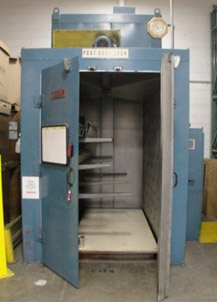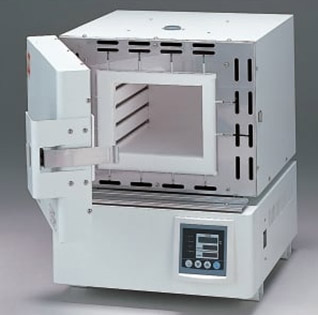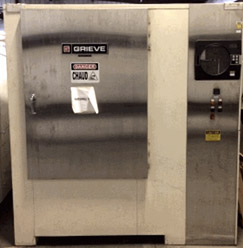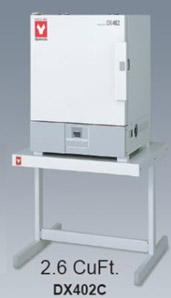Although ovens have been around for centuries, inventor James Sharp began producing commercial ovens in 1834, changing the way we used and implemented this tool forever. Industrial ovens are now a staple appliance in almost every large industry. They are widely used in food production, electronics, chemical processing, oil and gas, pharmaceutical, and automotive industries. Industrial ovens are characterized by large heating chambers that dry, cure, or bake components, parts, or final products. With such a wide variety of capabilities, ovens have been optimized for certain tasks. A few of the common types of industrial ovens are:
- Curing ovens
- Drying ovens
- Baking ovens
- Reflow ovens
- Batch ovens
- Conveyor or Continuous ovens
- Cleanroom ovens
Specialized ovens come in a variety of sizes and can be used for large or small volume applications, utilized in batches or continuously with a conveyor line, and can be configured for optimal temperature ranges.
How Industrial Ovens Work
Hot water, gas, and electricity are the most popular heat sources for an industrial oven, and these heat sources are frequently supplied via forced convection. Electrically heated industrial ovens are the most popular oven of the ones listed above. They are built to heat up very quickly, and they are known to have a long lifespan. In addition, these industrial ovens are often affordable and do not pollute the environment.
Gas-fired ovens are another popular choice, and they can be directly or indirectly fired. Both ovens may run on natural gas or propane, and while they are initially more expensive than electric ovens, their ongoing operating costs are far lower.
In a hot water-heated industrial oven, water passes through radiator coils to emit heat. When lower temperature ranges are used and speedy heat-up is not necessary, these ovens are quite practical.
Although airflow is crucial for all industrial ovens, the airflow pattern may vary between models. Here are several common airflow patterns:
- When large materials are to be utilized in the oven, a horizontal/vertical airflow pattern is frequently seen. This allows the supply to be on the oven side and the return duct to be located on the oven ceiling. A vertical/horizontal design is the opposite: the return duct is on the side, and the supply is on the ceiling.
- When using smaller materials or if the materials are suspended on shelves in the oven, a vertical/top-down or vertical/bottom-up airflow pattern is used. When shelves are used to insert the materials into the oven, a full horizontal airflow design can be used. The airflow around the shelving units is meant to be as unobstructed as possible in these layouts.
Popular Types of Industrial Ovens
Walk-In ovens, vacuum ovens, cabinet-type ovens, and laboratory ovens are all popular types of industrial ovens. Each type is optimized for different conditions.
A walk-in oven, or a “batch” oven, function by entering materials that need to go through the same heat-treatment process in batches. If the material to be heat-treated needs to be changed for separate batches, walk-in ovens are also beneficial. Batches are loaded into the industrial oven on carts, trays, or racks, which can be done manually or automatically, making switching between batches easy.

Vacuum ovens are frequently used when a product is to be “heat-treated.” The product is subjected to a vacuum environment (loss of air). The benefits to this include: heat loss by convection is minimized, contamination is eliminated, and oxidation is prevented. Vacuum ovens are able to reach temperatures as high as 5000 degrees Fahrenheit.

Cabinet-type ovens are also known as double-ovens. By dividing the oven into sections, separating materials is possible. The most common cabinet-type ovens are built into the kitchen cabinet of a home or business.

Laboratory ovens come with a variety of configurations. Many times, these programmable ovens perform at a variety of temperatures and pressures, and they are capable of drying, sterilizing, or baking materials.

Electric vs. Gas Ovens
The most common ovens on the market are electric ovens. They are easy to maintain, relatively inexpensive, and simple to operate. However, they are more expensive to operate in the long run.
Electric ovens employ two independent elements to charge the heating component, then use a fan to distribute heat throughout the oven. As a result, electric ovens produce dry, even heat which is excellent for baking. The cons are that these ovens tend to cook things slower than gas ovens and are slower to heat up and adjust temperatures.
A gas oven generates heat by burning gas. They are typically more expensive, but they will save you money in the long run. Natural gas is used in gas ovens lit by a spark generator or a small pilot flame.
The gas runs around the main section of your oven, and when you turn on the ignition, it activates the spark generator, which ignites the gas and lights the burner. Gas ovens also ultimately produce a moister cooking environment. One major downfall of gas ovens is that they can have gas leaks, which is a huge safety concern.
What To Look For When Buying An Industrial Oven
There are a few things to consider before purchasing an industrial oven. Think about the following:
- The amount of material that will be treated
- The products’ uniformity, size, and shape
- The temperature tolerance
- Whether you require batch or continuous in-line processing
Another important consideration when purchasing an industrial oven is the manner of heat transfer. Natural convection, forced convection, and radiant heat sources are all examples of heat transmission mechanisms.
Natural convection heating might be quick, but it isn’t always as consistent and uniform as forced convection. These methods are versatile, easy to manage, and can handle a wide range of shapes. Radiant heat transfer is faster at higher temperatures and less expensive, but it is less versatile than convection and must be customized to the product.
Batch ovens are typically offered in a cabinet or truck-load configuration, and they range in sizes from small tabletop units to large industrial systems. Sterilization, curing, drying, and other general laboratory tasks are most often performed in bench-mounted or compact cabinet-style ovens. With continuous ovens, you need to consider the means of conveyance, air distribution techniques, and product loading methods.
Common Industries and Applications
Food Industry
When you think of industrial ovens and their uses, the first thing you may think of is the food industry—specifically large or franchised kitchens. Industrial ovens are used for baking, cooking, roasting, and broiling food. Because of the size of the industrial oven, a single kitchen owning one oven would produce a large number of goods much faster than a traditional oven.
Medical and Pharmaceutical Industries
You can sterilize various medical gadgets and instruments in industrial ovens. Medical and surgical components such as staples, metal rods, scalpels, scissors, and syringes are among the other medical equipment that can be decontaminated using industrial ovens. Industrial ovens used in the healthcare industry must be temperature controlled to ensure all bacteria, germs, viruses, and other pollutants are eradicated, ensuring that medical equipment is safe to use.
In the pharmaceutical realm, industrial ovens are also used for baking the coatings of pills. Some industrial ovens are also used with thermal oxidizers to burn off the excess chemicals and waste made in producing such products.
Burn-In Testing Materials
Materials can also be tested in industrial ovens. The industrial ovens used for burn-in testing materials are designed for static and dynamic burn-in of integrated circuits and some electric devices, such as laser diodes.
Tips for Finding and Buying and Industrial Oven
When buying an industrial oven, it’s always best to use a trusted source. Once you’ve determined the type of oven you or your business needs, finding one on Surplus Record is easy! You can use the search bar in the header of our website to perform a basic search. Simply type in “ovens” and narrow it down by one of several types.
We also work with a variety of dealers who specialize in a variety of ovens. You can also find dealers in your area or by name who specialize in ovens. We carry a variety of manufacturers, popular brands such as Blue M, Despatch, Grieve, and Gruenberg.
Get Your Next Industrial Oven Today
Surplus Record has been a champion for machinery dealers in North America for almost a century, helping thousands of dealers and individual sellers connect with end-user purchasers to sell surplus machinery and equipment.
Surplus Records’ comprehensive database of surplus, new, and used equipment is a great place to start if you’re looking for tools or machinery. Browse our extensive selection of inventory today to find the perfect industrial oven to meet your needs!

